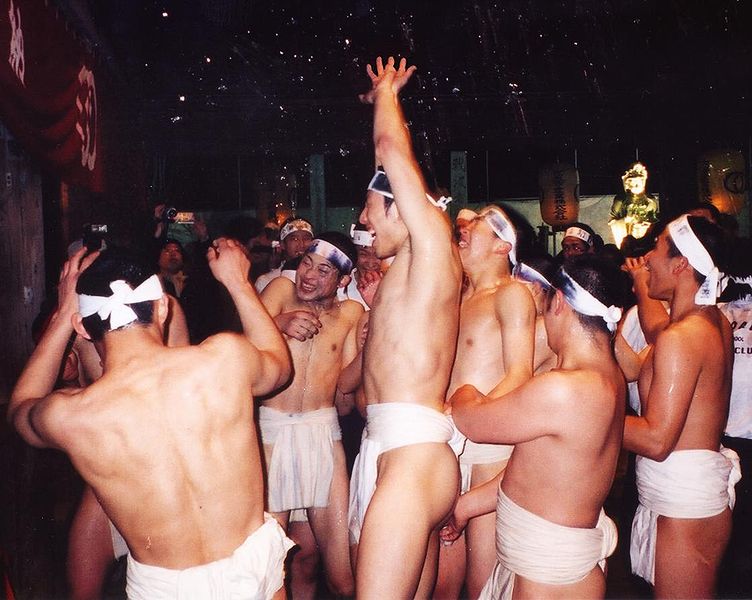
The Intriguing Saidai-ji Eyo Hadaka Matsuri
The Saidai-ji Eyo Hadaka Matsuri (裸祭り “Naked Festival”) is held on the third Saturday of February each year in Okayama where it originated. Several other Hadaka Matsuri are held in other parts of Japan at different times, but the one in Okayama is the most popular.
Hadaka Matsuri at Saidaiji Temple. | CES~commonswiki
It is a Japanese festival where participants, usually men, wear the traditional Japanese loincloth known as fundoshi, sometimes with a happi coat, a conventional Japanese coat with straight sleeves. It is usually made of indigo or brown cotton and imprinted with a crest. More than 9,000 men participate in the Saidai-ji Eyo Hadaka Matsuri each year.
The Saidai-ji Eyo Hadaka Matsuri dates back 500 years when religious worshippers would clamor to receive paper talismans called Go-o from priests who threw them out the windows. The talismans symbolized the completion of New Year ascetic training by the priests.
It is believed that people who receive the talismans would have good fortune for the rest of the year. More and more people wanted to receive these good luck talismans each year and since paper was easily destroyed, it was changed to the wooden ofuda.
Men who participated in the festival would chant “Wasshoi! Wasshoi!” The word originated from the Japanese phrase “Wajo Dokei” which means “to unify the people’s hearts together and be full of enjoyment.”
Each man would only have one objective–to obtain sacred lucky sticks known as “shingi”. A priest throws out to the crowd only one pair of sticks, four centimeters in diameter and 20 centimeters long. The lucky man who obtains the sticks puts them in a wooden measuring box (masu) heaped with rice. The lucky man is then believed to be blessed with happiness for the whole year. There are 100 other lucky items that are thrown into the crowd such as bundles of willow strips. With so many men participating in the event, it is a challenge to catch any of the lucky items.


